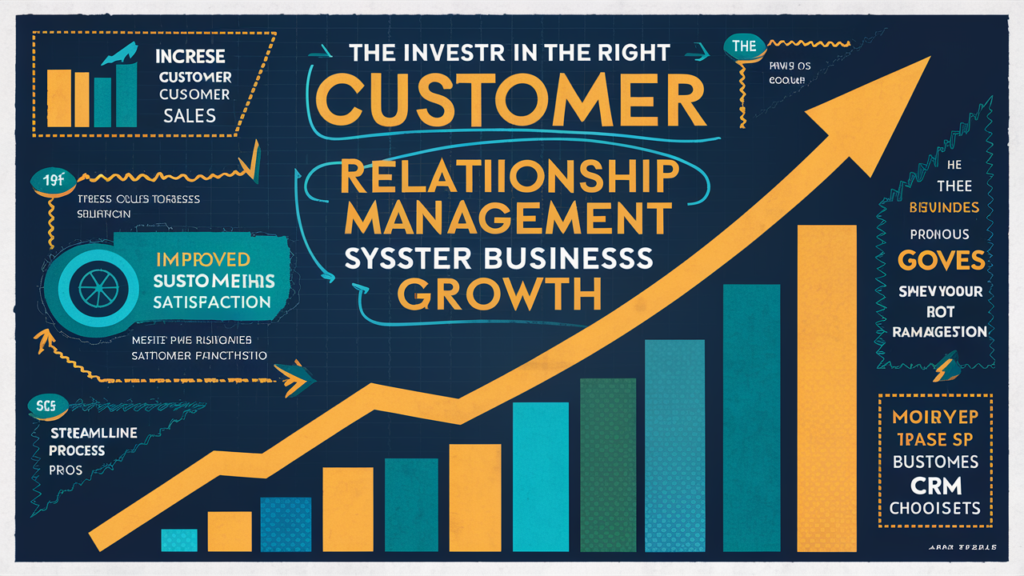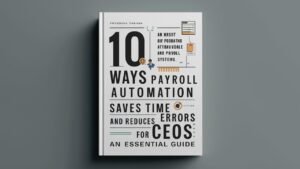Investing in the right CRM for growth system is a pivotal step in ensuring your business’s growth and success. CRMs are designed to streamline processes, improve customer relationships, and drive sales growth. But with an array of options available, selecting the right CRM can be challenging. This guide dives deep into why it’s critical to choose the right CRM and how it can significantly boost your business’s growth.
1. The Importance of CRM in Modern Business 📈
With the surge in competition across almost all industries, businesses need ways to stand out. A Customer Relationship Management (CRM) system can be a game-changer. By centralizing customer information, automating routine tasks, and providing valuable analytics, a CRM system greatly enhances a company’s ability to foster stronger relationships with its customers.
Why Focus on CRM?
- Customer-Centric Approach: In today’s market, the customer is king. A CRM ensures you are always on top of customer interactions, preferences, and feedback.
- Streamlined Processes: Automate mundane tasks and free up your team’s time for strategic activities.
- Data-Driven Decisions: Make informed decisions with access to organized and comprehensive customer data.
2. Key Benefits of Implementing a CRM System 🌟
Investing in the right CRM offers numerous benefits that directly contribute to business growth, including:
- Enhanced Customer Relationships: With detailed customer profiles, businesses can personalize interactions, leading to increased customer satisfaction and loyalty.
- Improved Sales Performance: CRMs provide tools for sales forecasts, pipeline management, and performance metrics, helping to drive sales growth.
- Better Team Coordination: A CRM fosters collaboration across different departments, ensuring everyone has access to the same customer information.
- Efficient Campaign Management: Track campaign impact and ROI more effectively through integrated CRM analytics.
3. Essential Features to Look for in a CRM 🔍
Choosing the right CRM means considering features that align with your business needs. Here are some must-have features:
- Contact Management: Centralize all customer information in one place.
- Sales Management: Manage leads, opportunities, and track sales performance.
- Customer Support: Tools for managing inquiries, issues, and support tickets.
- Analytics and Reporting: Gain insights on customer behaviors, sales performance, and campaign success.
- Integration Capabilities: Ensure the CRM can integrate with other tools and software your business uses.
4. How the Right CRM Enhances Customer Support 📞
A robust CRM system can significantly elevate customer support in several ways:
- Unified Customer View: Gain a 360-degree view of customer interactions, history, and preferences.
- Automated Workflows: Automate responses to common queries, reducing response times.
- Real-time Support Tracking: Monitor and manage support tickets in real-time to ensure timely resolutions.
- Customer Feedback Analysis: Gather and analyze customer feedback for continuous improvement.
5. Evaluating Your Business Needs for CRM Integration 🤔
Before selecting a CRM, it’s essential to evaluate your business needs:
- Identify Key Objectives: Understand what you want to achieve with a CRM, be it improved sales, better customer service, or enhanced marketing efforts.
- Assess Existing Processes: Evaluate current processes that could be optimized through CRM functionality.
- Scalability: Ensure the CRM can grow with your business, accommodating increasing data and users.
- User Adoption: Consider the ease of use to promote user adoption and facilitate training.
6. The Process of CRM Implementation 🚀
Implementing a CRM involves several crucial steps:
- Planning: Define your goals, budget, and timeline.
- Selection: Choose a CRM that aligns with your business needs.
- Data Migration: Transfer existing customer data to the new CRM system.
- Customization: Tailor the CRM to fit your business processes.
- Training: Provide comprehensive training for all users to ensure effective adoption.
- Monitoring and Optimization: Continuously monitor performance and make necessary adjustments.
7. Real-life Success Stories of Businesses Growing with CRMs
- Company A: Increased sales by 30% within six months of CRM implementation through better lead tracking and pipeline management.
- Company B: Improved customer retention rates by 25% due to enhanced customer service and personalized communication.
- Company C: Achieved a 40% reduction in support response times by automating workflows and tracking support tickets more effectively.
8. Common Pitfalls to Avoid When Choosing a CRM ⚠️
While CRMs offer numerous benefits, be aware of these common pitfalls:
- Ignoring Business Needs: Not all CRMs are one-size-fits-all. Ensure the selected CRM aligns with your specific requirements.
- Overlooking User Training: No matter how good the CRM, if users aren’t adequately trained, it won’t be successful.
- Neglecting Data Quality: Ensure the data migrated to the new CRM is clean and organized.
- Skipping Integration: Make sure the CRM can integrate seamlessly with other business tools or systems.
Conclusion: Making the Right CRM for Growth
Choosing the right CRM is not just about finding software with the most features. It’s about selecting a system that aligns with your business objectives, enhances efficiency, and drives growth. By understanding your business needs, evaluating different CRM features, and adopting best practices for implementation, you can significantly improve customer relationships, streamline operations, and achieve sustainable business growth.










